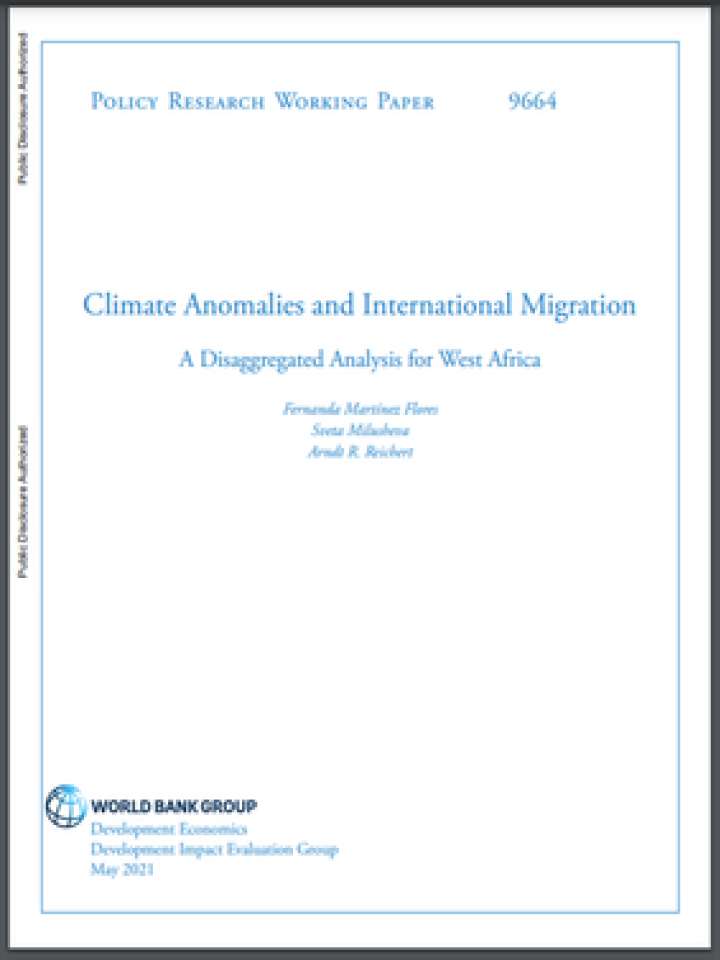Climate anomalies and international migration: a disaggregated analysis for West Africa
This study investigates the extent to which soil moisture anomalies drive international migration decisions within the West African region and toward Europe, using novel geo-referenced and high- frequency data. Migration is one of the channels West African populations can use to adjust to the negative impacts of climate change. In the coming decades, hundreds of millions of people are expected to be exposed to the impacts of climate change. Extreme weather events, such as heatwaves and droughts, could increasingly become the norm. This trend is expected to have serious impacts on agricultural production and, by implication, to disproportionately affect poor economies where agriculture continues to be the main source of employment, livelihood, and income. In light of a large influx of asylum applicants and a strong shift in the political landscape in favor of a reduction of immigration in recent years, European policy makers are concerned that the changing climate can exacerbate migration pressures.
The findings show that drier soil conditions decrease (rather than increase) the probability to migrate. A standard deviation decrease in soil moisture leads to a 2 percentage point drop in the probability to migrate, equivalent to a 25 percent decrease in the number of migrants. This effect is concentrated during the crop-growing season and likely driven by financial constraints. The effect is only seen for areas that are in the middle of the income distribution, with no impact on the poorest or richest areas of a country, suggesting that the former were constrained to start and the latter can address those financial constraints.
Explore further
